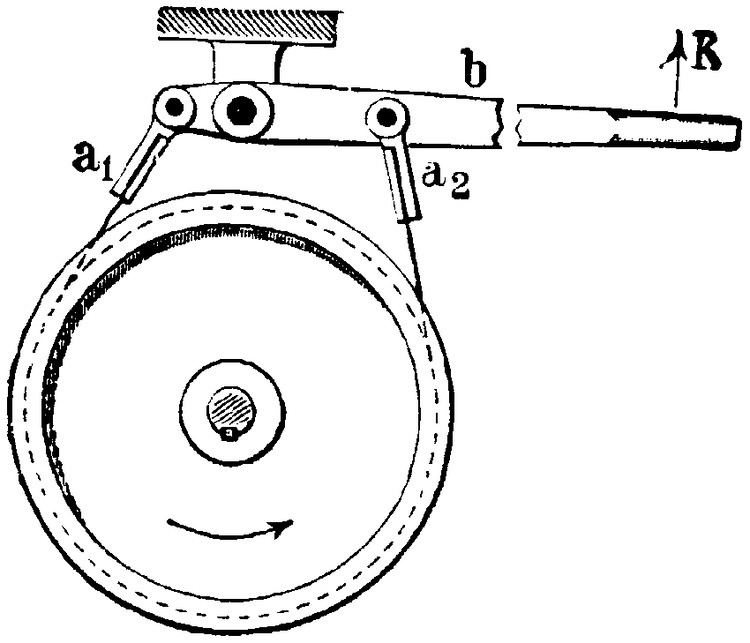 | ||
A band brake is a primary or secondary brake, consisting of a band of friction material that tightens concentrically around a cylindrical piece of equipment to either prevent it from rotating (a static or "holding" brake), or to slow it (a dynamic brake). This application is common on winch drums and chain saws and is also used for some bicycle brakes.
Contents
A former application was the locking of gear rings in epicyclic gearing. In modern automatic transmissions this task has been taken over entirely by multiple-plate clutches or multiple-plate brakes.
Features
Band brakes can be simple, compact, rugged, and can generate high force with a light input force. However, band brakes are prone to grabbing or chatter and loss of brake force when hot. These problems are inherent with the design and thus limit where band brakes are a good solution.
Effectiveness
One way to describe the effectiveness of the brake is as
